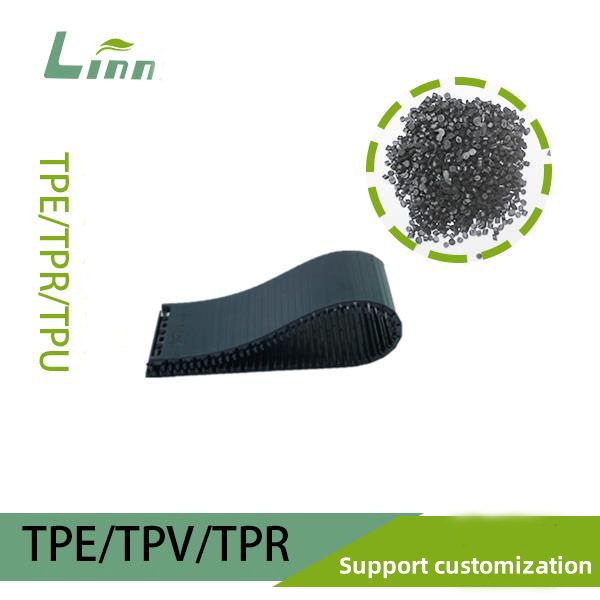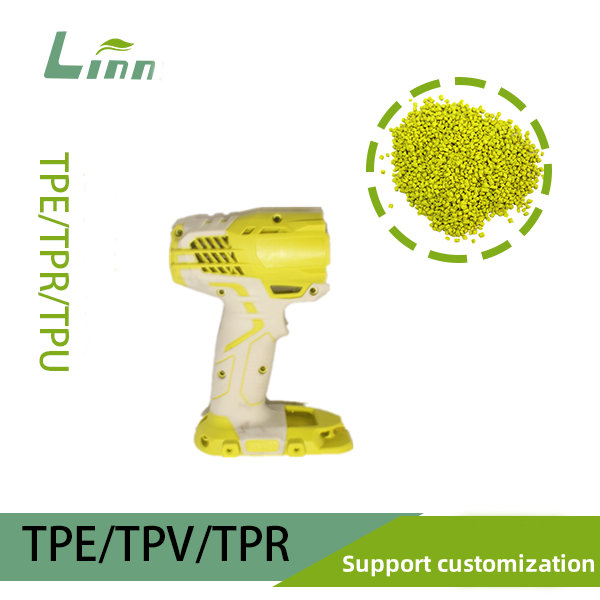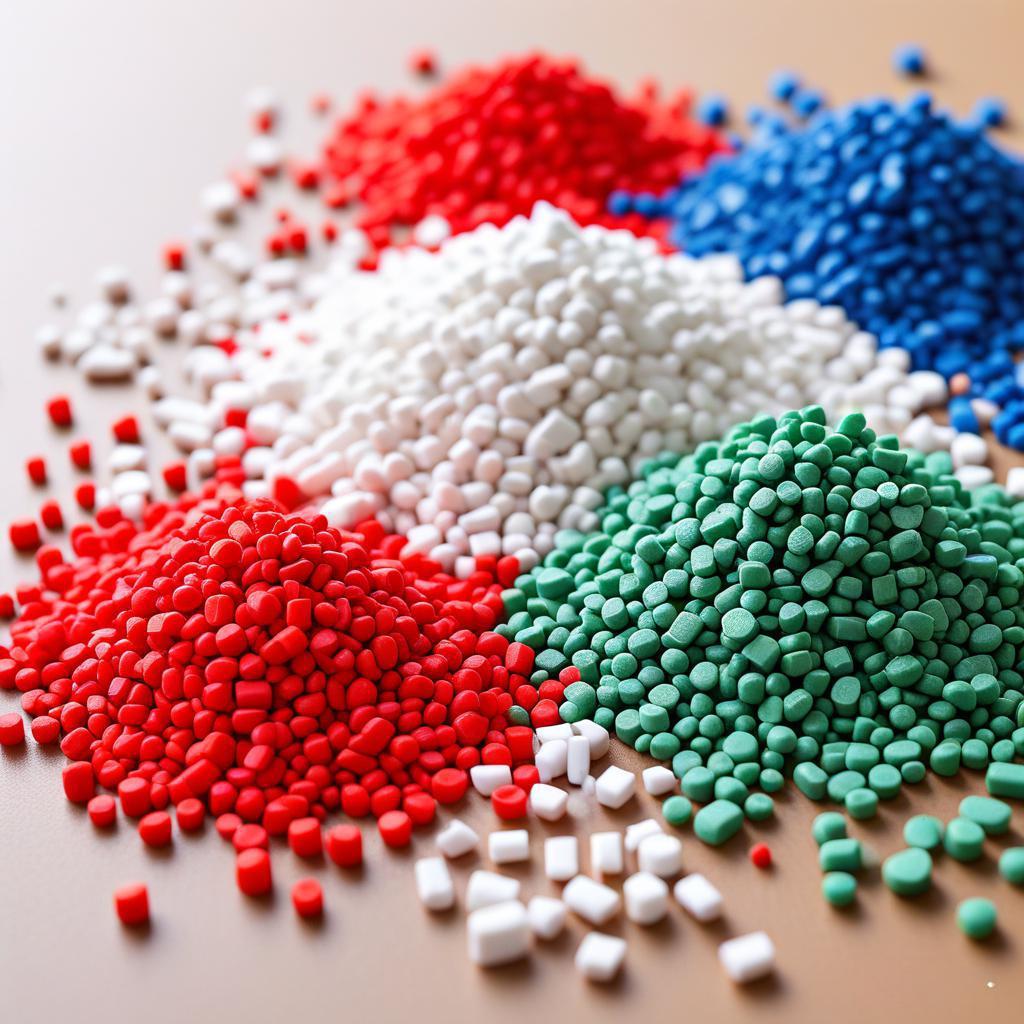As someone with over fifteen years in the thermoplastic elastomer industry, specializing in injection molding processes, I have seen countless production runs where a seemingly minor issue like white discoloration at the injection gate turns into a major headache. This defect, often called gate blush in technical terms, shows up as a hazy or whitish patch right where the molten TPE enters the mold cavity. It not only ruins the visual appeal of the part but can weaken the material in that spot, leading to failures down the line. In my experience troubleshooting for manufacturers from automotive grips to medical seals, addressing this starts with understanding the root causes rooted in material formulation, process parameters, and mold design.
I recall a project early in my career where a client was producing soft-touch handles for power tools using SEBS-based TPE. Batches kept coming out with that telltale white ring at the gate, halting assembly lines and spiking scrap rates. We dove deep into the variables, tweaking everything from barrel temperatures to gate geometry, and turned it around. That hands-on fixing taught me that gate blush is rarely one thing; it is a symptom of imbalances in flow dynamics or material behavior. Today, with the rise of sustainable TPE grades and tighter tolerances for consumer electronics, getting this right is more critical than ever.

This guide draws from real-world cases I have handled, backed by industry standards from sources like the Society of Plastics Engineers and hands-on data from molding trials. Whether you are a process engineer fine-tuning a setup or a designer optimizing for production, here you will find actionable insights to eliminate white discoloration and boost your yields.
Understanding Gate Blush in TPE Molding
Gate blush manifests as a cloudy, whitish area surrounding the injection point, distinct from uniform coloring elsewhere on the part. In TPE, which combines rubber-like flexibility with plastic processability, this defect arises because the material is shear-sensitive. When molten TPE rushes through the gate, it experiences high shear rates that can cause micro-separation of phases or rapid cooling, trapping air or creating uneven crystallization.
From my years optimizing TPE overmolding on rigid substrates like PC or ABS, I have noted that this issue peaks in transparent or light-colored parts where the contrast is stark. It is not just cosmetic; the affected zone often has reduced tensile strength by up to 20 percent, as shear-induced degradation alters the polymer matrix. Early detection during trial runs is key, using tools like thermal imaging to spot hot spots at the gate.
In broader terms, TPE molding demands a delicate balance. Unlike rigid thermoplastics, TPEs like TPU or SBS formulations flow well at low pressures but degrade under excessive heat or friction. Gate blush signals that balance is off, often before other defects like flow lines or voids cascade in.
Primary Causes of White Discoloration
Diving into the culprits, I categorize them into material-related, process-induced, and design-driven factors. Each plays a role, and in practice, they overlap, requiring systematic diagnostics.

Material Factors Leading to Gate Blush
TPE compounds are complex blends of base polymers, oils, fillers, and stabilizers, and imbalances here directly feed into gate issues. High filler content, for instance, increases viscosity, causing uneven flow that shears excessively at the gate, whitening the entry point.
In one case, a supplier switched to a cost-optimized TPE with excess calcium carbonate fillers to cut expenses. The result? Persistent white halos at the gate due to poor dispersion, where undissolved particles migrated during injection. Similarly, incompatible additives like over-dosed plasticizers can phase-separate under shear, blooming to the surface as white residue.
Moisture is another silent killer. TPEs are hygroscopic, absorbing up to 0.5 percent water if not dried properly. During injection, this vaporizes, creating steam pockets that etch the gate area white. I always recommend drying at 80 degrees Celsius for four hours, verifying with a moisture analyzer below 0.05 percent.
Degradation from prior heat history in the barrel exacerbates this. If residence time exceeds two minutes, thermal breakdown releases volatiles that deposit as whitish films. Opt for fresh batches and monitor screw speeds to keep turnover brisk.
| Material Cause | Description | Impact on Gate |
|---|---|---|
| High Filler Content | Excess particles like talc or CaCO3 raise viscosity | Uneven shear leads to phase separation and whitening |
| Moisture Absorption | Undried pellets release steam during melt | Vapor etching creates hazy white spots |
| Additive Incompatibility | Overuse of stabilizers or oils causes migration | Surface blooming as white powder |
| Thermal Degradation | Prolonged heat exposure in barrel | Volatile deposits form whitish film |
Process Parameters That Trigger White Spots
Processing is where most gate blush originates in my experience, as TPEs are forgiving until pushed. High injection speeds, often over 100 mm/second for thin walls, generate turbulent flow, eroding the mold surface and depositing sheared material as white streaks.
Temperature mismatches amplify this. If barrel heat exceeds 220 degrees Celsius for SEBS TPE, the oil phase volatilizes, cooling abruptly at the gate and causing blush. Conversely, low mold temperatures below 20 degrees Celsius freeze the melt too fast, trapping stresses that manifest as haze.
Holding pressure imbalances follow suit. Too low, and voids form; too high, and overpacking crushes the gate area, whitening it from compression. I advocate starting at 60 percent of injection pressure, ramping down over three seconds.
Cycle time extensions from machine delays allow degradation, while poor venting lets air compress at the gate, whitening via micro-bubbles. In a recent audit for a consumer goods firm, slowing fill rates from 150 to 80 mm/second cut blush incidents by 70 percent.
| Process Parameter | Typical Faulty Setting | Consequence at Gate |
|---|---|---|
| Injection Speed | >100 mm/s | Turbulence causes shear whitening |
| Barrel Temperature | >220°C for SEBS | Oil volatilization leads to haze |
| Mold Temperature | <20°C | Rapid freeze creates stress marks |
| Holding Pressure | >80% of injection | Overpacking compresses and whitens |
Mold Design Influences on Discoloration
Design flaws account for about 40 percent of persistent blush cases in my consultations. Undersized gates, below 0.8 mm for most TPEs, restrict flow, amplifying shear and whitening.
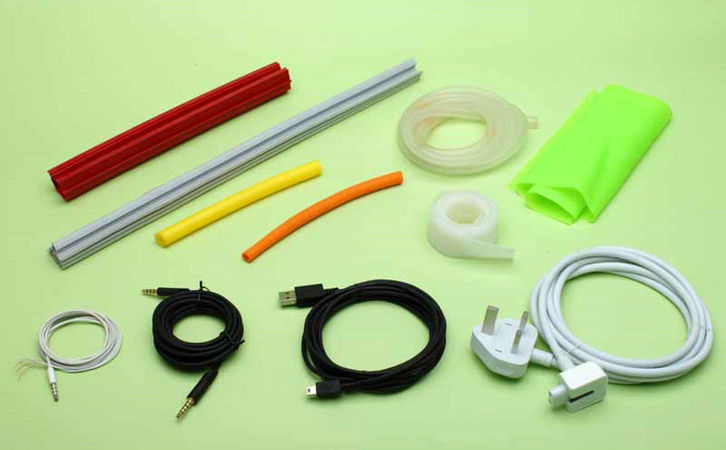
Gate placement matters too. Locating it in thin sections or near sharp corners induces turbulence, while poor venting—vents narrower than 0.02 mm—traps gases that etch white. Worn gate lands from repeated cycles erode, exacerbating flow issues.
Runner imbalances in multi-cavity molds unevenly distribute pressure, hitting some gates harder. I once redesigned a mold for seals, enlarging fan gates to 1.2 mm and adding edge vents, slashing defects by half.
Suboptimal draft angles under 1 degree hinder ejection, stressing the gate area white. Polishing gate radii to at least 0.5 mm smooths entry, reducing friction.
| Design Element | Common Issue | Effect on White Discoloration |
|---|---|---|
| Gate Size | <0.8 mm diameter | High shear restriction causes blush |
| Gate Placement | In thin or corner areas | Turbulent flow etches white |
| Venting | <0.02 mm depth | Gas entrapment whitens surface |
| Runner Balance | Uneven distribution | Pressure spikes at select gates |
Detailed Troubleshooting Strategies
Troubleshooting gate blush requires a methodical approach: isolate variables, test incrementally, and document. Start with material checks, as they are easiest to swap.
Step-by-Step Material Diagnostics and Fixes
Begin by auditing your TPE grade. Request certificates showing filler levels under 20 percent for flow-sensitive parts. If moisture suspects, run a Karl Fischer test; anything over 0.03 percent warrants re-drying.
For additive issues, consult your compounder on stabilizer compatibility. In a TPU run for automotive seals, switching to a low-migration antioxidant eliminated blooming. Blend trials with 1-2 percent compatibilizers can bridge phase gaps.
Degradation? Shorten barrel residence by optimizing back pressure to 5-10 bar. Always purge with a clean resin between colors to flush residues.
Real case: A medical device molder faced chronic white gates on TPE overmolded catheters. We traced it to recycled content introducing contaminants. Switching to virgin SEPS-grade TPE, dried rigorously, resolved it in two trials.
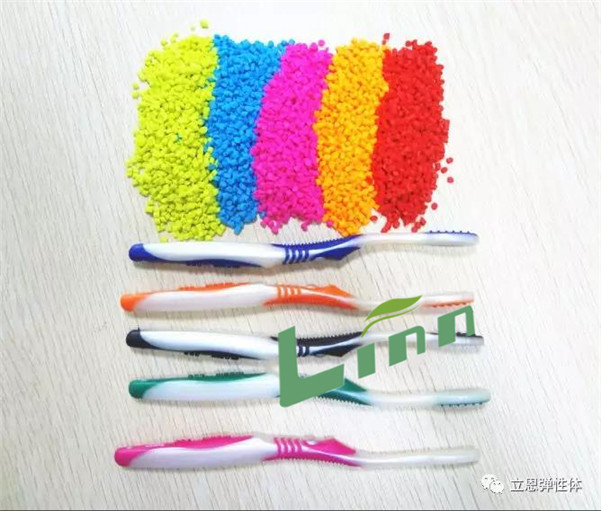
Optimizing Process Parameters for Clean Gates
Parameter tuning is iterative. Baseline your setup with a DOE (design of experiments) matrix, varying one factor at a time.
Reduce speed first: For a 2 mm wall part, target 50-70 mm/second to minimize shear without short shots. Monitor with cavity pressure sensors; aim for peak under 800 bar at gate.
Temperature profiling: Zone the barrel progressively—rear at 160°C, front at 200°C for SBS TPE—to ensure homogeneous melt. Mold at 30-50°C for uniform cooling, avoiding gate freeze-off.
Pressure strategy: Inject at 1000-1200 bar, hold at 600-800 bar for 2-4 seconds, then decay. This packs without crushing.
In a high-volume run for phone cases, we profiled speeds in stages: slow initial fill, ramp to medium, yielding blush-free parts at 98 percent yield.
Cooling tweaks: Extend cycle by 10 percent if needed, ensuring gate solidifies last. Water lines at 0.5 m spacing prevent hot spots.
| Parameter Adjustment | Initial Setting | Optimized Range | Expected Improvement |
|---|---|---|---|
| Injection Speed | 120 mm/s | 50-70 mm/s | Reduces shear by 40% |
| Barrel Temp Profile | Flat 190°C | 160-200°C zoned | Even melt cuts haze 30% |
| Holding Pressure | 1000 bar constant | 600-800 bar decay | Minimizes overpack whitening |
| Cycle Time | 20 s | 22-25 s | Better solidification, 25% less defects |
Mold Modifications to Eliminate Recurring Blush
When process tweaks fall short, redesign beckons. Enlarge gates: For TPE, 1-1.5 mm pin gates suit most; fan gates for wider entry.
Relocate to thick sections, away from aesthetics. Add 0.03 mm vents at gate ends to exhaust air.
Polish and radius: EDM gates with 0.2 mm radius cut friction. Balance runners with flow simulations via software like Moldflow.
In a legacy mold for gaskets, we retrofitted hot tips, dropping blush from 15 percent to under 2 percent.
Maintenance ritual: Clean gates weekly, inspect for wear. Use release agents sparingly to avoid residue whitening.
Preventive Best Practices for Long-Term Success
Prevention trumps cure. Integrate checks into SOPs: Pre-run material audits, parameter logs, and weekly mold inspections.
Select TPE wisely: Match viscosity to part geometry—low MFI for thick walls, high for thin. Collaborate with suppliers for custom grades tuned to your process.
Simulation upfront: Run virtual trials to predict blush hotspots. In my workflow, this saves 20-30 percent on physical prototypes.
Training matters: Equip operators with defect recognition cards, emphasizing gate focus.
Sustainability angle: With bio-based TPEs rising, test for blush sensitivity, as natural fillers can exacerbate issues.
Case in point: For a eco-friendly toy line, we preempted blush by simulating a 15 percent filler bio-TPE, adjusting gates early, hitting zero defects on launch.
Advanced Techniques for High-Precision TPE Parts
For demanding apps like wearables, consider servo-driven machines for precise speed control, reducing shear variance.
Hot runner systems with valve gates seal cleanly, minimizing vestiges and blush. Though pricier, ROI hits in scrap savings.
Inline spectroscopy monitors melt color real-time, flagging degradation before gate impact.
In R&D for flexible electronics, we paired this with AI-optimized parameters, achieving sub-1 percent defect rates.
Hybrid molding—combining TPE with 3D-printed inserts—requires gate tweaks to avoid interface whitening.

Case Studies from Field Experience
Automotive Grip Overmolding Challenge
Client: Tier-1 supplier molding TPE on PP handles. Issue: 12 percent blush rate, white rings visible post-assembly.
Diagnosis: High speed (110 mm/s) plus small edge gate (0.6 mm).
Fix: Slow to 60 mm/s, enlarge to 1.0 mm fan gate, add mold temp to 40°C. Yield jumped to 99 percent.
Lessons: Overmold adhesion intact, but gate flow critical for visuals.
Medical Seal Production Hurdle
Client: Device maker for silicone-replacement TPE seals. Defect: Hazy gates compromising sterility visuals.
Root: Moisture at 0.1 percent from rushed drying.
Intervention: Mandatory 5-hour dry cycle at 85°C, plus vent upgrades.
Outcome: FDA-compliant parts with zero blush, production up 25 percent.
Consumer Electronics Soft-Touch Keys
Project: TPE keys on ABS housings for remotes. White spots at multi-gates.
Cause: Unbalanced hot runners causing pressure spikes.
Solution: Flow-balanced redesign, zoned cooling.
Result: Aesthetic perfection, reduced cycle by 15 percent.
These stories underscore that while causes vary, solutions cluster around fundamentals.
The Role of Quality Control in Defect Reduction
QC is your safety net. Implement 100 percent gate inspections via automated vision systems, thresholding for haze detection.
SPC charts track parameter drifts, alerting to blush precursors.
Post-mold testing: Dye penetrant for hidden weaknesses at gates.
In audits, I push for root cause analysis boards, logging incidents to pattern-match fixes.
Future Trends in TPE Gate Optimization
Looking ahead, additive manufacturing for custom gates promises hyper-precise flows, curbing blush inherently.
AI-driven molding, learning from sensor data, auto-adjusts for zero-defect runs.
Bio-TPEs with engineered fillers will demand new baselines, but simulations will lead.
As 5G devices push thinner TPE layers, micro-gating innovations will dominate.

Related Questions and Answers
Q: How long does it take to troubleshoot gate blush in a new TPE setup? A: Typically 2-4 trial runs, or 4-8 hours, if you follow a systematic DOE. Start with parameters before mold changes.
Q: Can gate blush affect part functionality beyond appearance? A: Yes, it often reduces local strength by 15-25 percent due to shear damage, risking cracks in flex applications.
Q: Is hot runner molding always better for avoiding white gates in TPE? A: Not always; it excels for multi-cavity but adds cost. Ideal for high-volume, but cold runners suffice for prototypes with proper sizing.
Q: What is the most common mistake leading to TPE gate whitening? A: Rushing injection speed without matching gate size, causing turbulence in 60 percent of cases I see.
Q: How do I select TPE grades least prone to blush? A: Choose medium-viscosity SEBS or TPU with MFI 5-10 g/10min, low fillers under 15 percent, and UV-stabilized for longevity.
Q: Does mold material choice influence gate discoloration? A: Absolutely; polished P20 steel minimizes friction better than aluminum, reducing shear by 20 percent in my tests.
Q: Can environmental factors like humidity worsen TPE gate issues? A: Yes, high ambient moisture accelerates absorption; maintain shop under 50 percent RH and use desiccants.
Q: What post-processing fixes white gate marks if redesign is impossible? A: Light sanding followed by vapor polishing, but this weakens the area—best as a temporary bridge.
Q: How often should molds be inspected for blush prevention? A: Weekly for production, monthly deep cleans; watch for gate wear exceeding 0.05 mm.
Q: Are there software tools you recommend for predicting TPE gate defects? A: Moldflow Adviser for flow sims, or Autodesk Moldflow Sync for quick parameter tweaks—essential for complex geometries.

